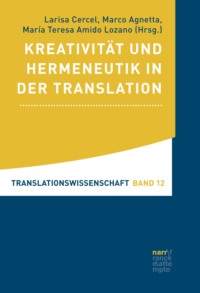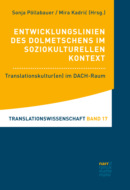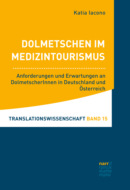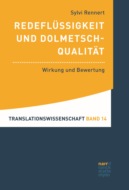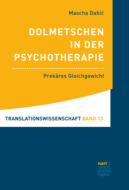Kitabı oku: «Kreativität und Hermeneutik in der Translation», sayfa 6
2 Holocaust Poetics
Particularly when we are translating poetry that has its origins in clearly identifiable historical events, we might expect accuracy to be our main concern. The poetry of Paul Celan is often referred to as “Holocaust poetry” (cf.e. g. Schlant 1999: 9). “Holocaust poetry” can be defined narrowly as poetry written at the time of the Holocaust or more broadly, as poetry influenced by, or bearing a clear relationship to, the events of the Holocaust (cf. Rowland 2005: 3).
However one defines it, all definitions have in common that they refer to poetry that is a response to real and extremely traumatic events. But it is a poetic response, and it is important to consider what that means. When Holocaust scholars speak of Holocaust poetry as “testimony” (Rowland 2014: 1), or as poetry that has the role of “keeping memory alive” (Rich 1993: 141), those terms express only part of what characterises Holocaust poetry (however broadly or narrowly defined). When translating it or discussing its translation we need to know what is peculiar to poetry as a type of writing, and what these characteristics of poetry mean for the translator. As Gubar (2003: 255) notes, Holocaust poetry is memorable in part because poetry is memorable by nature. Poetry is a particularly appropriate form to express emotion and suffering (see Boase-Beier 2015: 4f.). And, according to cognitive poetics, the poetic way of thinking is the most basic and innate, because the mind is inherently literary (see Turner 1996). Most importantly, poems in particular work by having cognitive effects on their readers, so the creative engagement of the reader is potentially greater when reading a poem (Boase-Beier 2015: 6–8). If we assume that all poetry embodies a particular poetics and that the translation of poetry involves the translation of poetics (see Boase-Beier 2015: 14–16), then reading a Holocaust poem for translation depends upon an ability to engage with Holocaust poetics.
If we fail to consider Holocaust poetry as poetry, there is a danger that we will treat it as though it provided documentary accounts. With translated Holocaust poetry, such a view leads inevitably to a narrow concern with questions of accuracy, inadequacy and loss. Thus Lawrence Langer in his Holocaust anthology, Art from the Ashes, says that reading translated Holocaust poetry is “frustrating” because “verse usually resits” the “close approximations to the original” that he seems to think are the essence of literary translation (Langer 1995: 553). For Langer, this perceived lack of “close approximations” to the original text prevents the reader from grasping “the dense cluster of associations emerging from a particular verbal and historical culture” (Langer 1995: 553).
Such statements beg many questions. Can we assume that the readers of the original would have had access to these associations? Does the language of poetry, when not translated, allow such access? What are “close approximations to the original”? In fact, there is no reason to assume that Holocaust poets wrote only or primarily to communicate facts, and especially not to those who already know them. And most Holocaust poets were also translators. So there is no reason to assume that they were resistant to the idea that poetry could be translated. A critic who takes seriously the fact that Holocaust poetry is poetry will need to consider the ways in which the translator has engaged with its poetics.
As I noted in the previous section, when we read for translation we compare the source text in front of us with the target text it is to become and the source language with the target language into which it is to cross. Style is the result of choice (see Short 1996: 68–71; Verdonk 2002: 5f.), which may be conscious or unconscious, and we see in the stylistic features of the text a mind-style, from which we try to reconstruct the poetics that led the poet to make particular stylistic choices. So we need to understand as much as possible of the poet’s background and context, and what might be inferred, from the poem together with this background, of the poet’s concerns and state of mind. This is important to the translator because, while we could argue that there is such a thing as Holocaust poetics, we are always dealing also with the individual poetics of the poet in question.
Many scholars have noted that there are some common characteristics of Holocaust poetry, which are sometimes described under labels such as “awkward poetics” (Rowland 2005) or “traumatic realism” (Rothberg 2000). They include the use of breaks in narrative thread, or in syntax (Hamburger 2007: 29), the use of prosopopoeia, or speaking for others (Gubar 2003: 178; Martin 2011: 98), “obscurity or ambiguity” (Felstiner 1995: xvii) and many other stylistic features, such as repetition or fragmentation of words that are typical of representations of trauma (Felman 1992: 29).
Particularly in Holocaust poetry written in the years after the Holocaust, we would expect to find more reflection on the process of writing poetically about Holocaust events and effects, so we might expect more fragmentation, repetition, ambiguity and other such stylistic features.
Holocaust (including post-Holocaust) poetry, then, is not documentation. It is based on factual events but, apart from poetry written in ghettos or in those concentration camps where small clandestine acts of creative activity were possible, such as Buchenwald (e. g. Kirsten/Seeman 2012), it rarely recounts facts.
More often, especially when written in the years after the Holocaust, it expresses a traumatised state of mind, a concern with language and the way it was manipulated, and a focus on representation itself, which is possible in poetry because of what Jakobson called its “focus on the message for its own sake”, rather than for what it means or conveys (Jakobson 1960: 356).
Translating Holocaust poetry is only possible if that poetic context is understood in the way it is realised in the poetics of a particular poet. But, more than this, if we try to translate Celan’s poetics, we can hope that the new reader will not only be able to engage with the translated poem, but also to get a sense of Celan’s poetics when doing so, as embodied in the style of the new poem (cf. Schleiermacher 2012: 54f.).
3 Translating the Poetics of Paul Celan
Paul Celan was born Paul Antschel in 1920. His family were German-speaking Jews, living in the then Romanian town of Czernowitz, in Bukovina. As a child, besides speaking German and Romanian, he learned Hebrew, French, Latin, and Greek, and later English and Russian. His multilingual background was partly the result of the changing fortunes of Czernowitz, with its many occupations, partly the result of good schooling, partly a reflection of the life of educated Jews in Central Europe before the Second World War, and partly a reflection of Celan’s developing interest in language and languages (see Boase-Beier 2015: 91f.).
His experience of the Holocaust came at first hand. He had been forced to return home from his study of medicine in Tours on the outbreak of war. 3 years later, when Celan was 22, his parents were deported to a labour camp in Transnistria, in Ukraine, where his father died and his mother was murdered. Celan himself committed suicide in Paris in 1970.
The sudden loss of his parents, his particular grief for his beloved mother, and his feelings of guilt because he had survived, were crucial for the direction that his poetry, which he had begun writing as a teenager (Chalfen 1979: 58), was to take in future.
Celan’s poetry, like that of many other poets who survived the Holocaust but were severely traumatised by it (e.g. Rose Ausländer, Nelly Sachs), developed over time to become less explicit, dealing less with actual or imagined events, and more with the poet’s reactions to them. In Celan’s case, his later poems, especially those written in the last few years of his life, and while he was undergoing treatment for psychiatric illness, display what his translator Ian Fairley calls “synaptic denseness” (Fairley 2007: xv). No doubt influenced by his reading of Benjamin (see Felstiner 1995: 96), he often thematises Benjamin’s view that there was a creative spark in language, left there since it was originally used by God to create the world (see e. g. Benjamin 1992). But Celan emphasises the non-instrumental character of language, casting doubt on its ability to call anything into being through poetry, or speech or communication (cf. Hamacher 1994: 237). As is the case with Sachs, Celan is most famous among readers for his earlier post-war poetry. His pre-war poetry (like Sachs’s) is less well-known to readers, though it has been the subject of several critical studies (see Patrut 2006: 34), and a few of his earliest poems have been translated by John Felstiner (2001: 2–15).
His later poetry, though it has attracted much critical attention (see, for example, the studies in Fioretos 1994), is often seen as complex, and as difficult to translate (see Hamburger 2007: 24). His most anthologised poem in English, according to Granger’s 1997 and 2007 index to poetry in anthologies (Frankovich 1997; Kale 2007), is “Todesfuge” (Death Fugue) (Celan 1952: 37ff.).
One poem which is not listed at all by Granger is “Mit Äxten spielend” (Playing with Axes), first published in 1955 in Von Schwelle zu Schwelle (From Threshold to Threshold) (Celan 1982). It seems only to have been translated into English by one or two translators, for example by David Young (2010), though it has appeared in many other languages, for example, Ukrainian (Rykhlo 2014) and Japanese (Iiyoshi 1990). I begin with my translation of the poem, to make things easier for readers who do not speak German.
Playing with Axes
1 Seven hours of the night, seven years of waking:
2 playing with axes,
3 you lie in the shadow of righted corpses
4 – oh, the trees that you cannot fell! –
5 crown of the unsaid at their heads,
6 at their feet the pickings of words,
7 you lie and you play with the axes –
8 in the end you will glint just like they do.
The poem suggests a traumatised state of mind, that toys with ideas of revenge, regret, and helplessness. If it was originally conceived or composed around 1950, soon after Celan had gone to live in Paris, the seven years could refer to the time since he learned of his parents’ deaths. Seven is also an important number in Jewish mythology: there are seven working hours of the day, seven days of the week, seven branches of the menorah, seven species that symbolise the fertility of Israel (see Frankel and Teutsch 1995).
For the reader of the above English poem, as of any poem, interpretation is important: we want to make sense of the poem. At the same time, there are many aspects to the poem which defy straightforward interpretation: what are righted corpses? What are the pickings of words? Is the “you” of the poem the poet or some imagined reader? Thinking about these ambiguities in particular can lead us to consider the state of mind the poet was expressing, as conveyed by the translator. Because mind-style, as described above, is a reflection in the style of a text of the state of mind informing it, it is crucial that a translator pays attention to mind-style, and that a reader of the translation trusts the translator to have done so. We would expect to find the poet’s mind-style especially in such stylistic figures as ambiguity, repetition of structures and sounds, and metaphors. A reader who reads the poem “Playing with Axes” in English translation must be able to engage with the poem in this way, and also to experience cognitive effects, and the possibility of re-thinking the way the world is understood.
That is to say, the poem must allow the English reader to read creatively (irrespective of whether she or he actually chooses or is able to do so), to go beyond the sort of simple reading for pleasure and mild cognitive effects such as sadness, empathy or anger that could be termed everyday or non-analytical reading (see also Stockwell 2013: 264). Creative reading is always potentially analytical, open to the possibilities of the language of a poem, considering its poetic make-up, reflecting on one’s own ways of thinking and how they might change in response to the poem.
In reading the poem above creatively, the reader’s awareness that it is a translation, that it is an attempt to communicate in other words and in another language something said by another person, is crucial, a point to which I return in Section 4. This is because the images of inertia and the suggestion that words are substituted for action gain a different context when it is a translator speaking, and an English-speaking audience in the early years of the 21st century listening, from that which they had for a Holocaust survivor speaking and a German audience listening more than 60 years ago. It is to be hoped that the reader will understand the translator is telling someone else’s story and yet will still be able to get at least some sense of Celan’s poetics.
Since the above poem is my own translation, I am able here to consider in more detail the process of creative reading of the original for translation which preceded my English version. Here is the original poem “Mit Äxten spielend”, in German, with a gloss in English.
Mit Äxten spielend
with axes playing
1 Sieben Stunden der Nacht, sieben Jahre des Wachens:
seven hours of-the night seven years of-the waking
2 mit Äxten spielend,
with axes playing
3 liegst du im Schatten aufgerichteter Leichen
lie you in-the shade of-up-righted corpses
4 – o Bäume, die du nicht fällst! –,
o trees which you not fell
5 zu Häupten den Prunk des Verschwiegenen,
at heads the showiness of-the silenced
6 den Bettel der Worte zu Füßen,
the beggar’s-loot of-the words to feet
7 liegst du und spielst mit den Äxten –
lie you and play with the axes
8 und endlich blinkst du wie sie.
and at-last blink you like they
There are many points in this short poem at which an analytical and creative reading for translation involves a consideration of the poetics that resulted in these particular forms. I shall mention just 5 such points here.
(1) The title, repeated in line 2, recalls idioms such as “mit dem Feuer spielen” (“to play with fire”) and especially the phrase in Celan’s most famous poem, “Todesfuge” (Death Fugue) (Celan 1952: 37–39), “er spielt mit den Schlangen”, literally “he is playing with (the) snakes”. The reader thus has the sense of a character tempting fate, but not actually taking action. Furthermore, we might link this near-idiom with another such instance in the poem: “den Bettel der Worte zu Füßen” (the pickings of words at their feet). This phrase recalls the idiom “jemandem den ganzen Bettel vor die Füße werfen”, literally “to throw the whole pile of junk at someone’s feet”, which means that you throw everything (e. g. your work) down in front of someone and say you have had enough. The phrase also recalls, and contrasts with, “die Axt an etwas legen” (to take an axe to something), that is, to get rid of something that causes trouble or shame, a phrase that originates from John the Baptist, according to Luke 3: 9 (Holy Bible 2011: 935) (“The axe is laid unto the root of the tree”).
Near-idioms in the poem carry both the connotations of the particular idiom they suggest and also the connotations of idiomatic language per se. These may include the sense that the deepest insights into language and behaviour are to be found in the simplest, most everyday language, a view in which Celan was likely to have been influenced by Brecht and especially by Benjamin’s discussion of Brecht’s use of the notion of “crude thinking”, or “plumpes Denken” (see Benjamin 1971: 59–60) in Dreigroschenroman (Threepenny Novel) (Brecht 1991), a novel which revolves around the life of beggars, as do other works by Brecht. Benjamin notes that “a thought must be crude, in order to be realised in action” (my translation; see Benjamin 1971: 60). The fact that idioms are altered suggests also the poet’s concern with the manipulation possible when language is not questioned, a concern implicit in Derrida’s comment, quoted above, about Celan’s strong sense of German as a language not to taken at face value.
(2) The poem works on the basis of the conceptual metaphor PEOPLE ARE PLANTS. Conceptual metaphors (written in capitals to indicate mental rather than textual entities) are metaphors assumed to underlie all our thinking (see Lakoff/Johnson 1980) and to play an important role in literary texts (see Lakoff/Turner 1989: 67). Many of our common idioms and models of thought, especially to do with living and dying, are based on this conceptual metaphor: death as the grim reaper is a particularly potent one (see Fauconnier and Turner 2002: 291ff.). Celan’s great interest in plants is well-known (see Kraft 1986: 6), and in many of his poems, people are represented as flowers. In a striking earlier poem “Espenbaum” (Aspen Tree) (Celan 1952: 15) his mother is presented in contrast to a tree: the tree has a natural, and renewable, life-span, but his mother does not. In fact Celan never knew where his mother died exactly, and he had no grave to visit, so the loss, as is often the case in circumstances of war or disaster, was compounded by the psychological problems that the lack of knowledge of a grave can cause (see Fauconnier and Turner 2002: 204ff. on the importance of graves; cf. also Hamacher 1994: 221). In this poem, the corpses that have been placed upright are specifically addressed as trees. Here the image of the axe suggests the cutting down of corpses, perhaps of those hanged, and especially the intention to do so (“playing with axes”), and also the cutting down of those who are not actually corpses but the dead who have been made to act as the living, an interpretation suggested by the link between “aufrichten” (to put upright) and “richten” (to judge); see point 5 below.
(3) Reading the poem we are aware that a traumatised post-Holocaust mind-style is being represented. We see this suggested by patterns of semantic and phonetic repetition. For example, “Axt … Prunk … blinkst” are connected by sound, and “Prunk” and “blinkst” also etymologically and semantically because “Prunk” is a derivation from “prangen” (to shine), which means the same as “blinken”, from which comes the second person verb “blinkst”. There are many other instances of sound repetition, such as “Sieben … Stunden; Nacht … wachen … Schatten; sieben … spielen … liegst”. “Obsessional, compulsive repetition” in Celan’s poems, according to Felman (1992: 29), suggests a way of evoking traumatic experience indirectly, rather than through simple linear narrative.
(4) Pursuing connections of words that go beyond the surface of the text (as in the case of “Prunk” and “blinkst”) leads the translator as reader into the sort of thought processes that may be assumed to have informed the writing of the poem. We cannot, of course, know what these were, but we can see some of what preoccupied the poet, thus gaining insight into his particular concerns, aided by what we know, or can discover, from research into his background and the context in which he was writing. Studying linguistics in Paris in 1948 and 1949, Celan would have got to know the important work of Ferdinand de Saussure, published in 1916 (Saussure 1916) as well as Roman Jakobson’s work, especially that from the 1920s and 30s on linguistics and poetics (see Jakobson 1990: 541–552). Jakobson said that, contrary to the distinction Saussure made between synchrony (the present state of language) and diachrony (its history and future), in fact a language’s history interacts with its present state, just as possible choices interact with and reflect the one made, and existing words can exhibit parallelism with non-existent ones (Rudy 1997: xiii).
Here, for example, we might note that “blinkst” in the final line of the poem is related to the English words “black”, “blank” and “blink”, to the German words “blau” (blue) and “Blei” (lead) – another word of great importance in “Todesfuge”, where it is juxtaposed with “blau” – and to the French word “blanc” (white). All these words have their origin in Indogermanic “*bhel” (shine), as Celan, with his great interest in etymology, would have known. We see that, etymologically, white and black are the same, a fact that cannot have escaped Celan’s notice.
Etymology was important for Celan in part because he was interested in words, their origins, and the ways they naturally change or can be unnaturally made to change. But there is often a sense of obsessiveness about the etymological connections, as though knowing history can help us escape it, which gives an insight into a traumatised mind.
(5) Etymology is only one way in which words can be linked, and meanings, especially to the traumatised mind, can be seen to be contaminated by connotations. There are thus links of other types that lurk behind the poem. The word “aufgerichtet” in “aufgerichteter Leichen” (of corpses placed upright) is a word that triggers many such connections, especially because it is foregrounded in the poem, that is, it draws attention to itself by being an unexpected word (see Wales 2001: 157). One might expect “auferstanden” (resurrected), but why would corpses be placed upright rather than being raised? One reason might be because they are hanged, a common practice during the Holocaust, both inside concentration camps and in towns and cities. But the word “aufgerichtet” suggests “richten” (to judge), “hinrichten” (to execute) and “Richtbeil” (executioner’s axe), especially given the image of axes in the poem. Though the word “hinrichten” (to execute) does not actually occur in the poem, we read it because of the connotations of the image of hanging, the connotations of judging, the use of the word “axe” and the word “fällst” in the following line, from “fällen”, which means both “to fell”, as in “to fell a tree”, or, in keeping with the conceptual metaphor, “to cut down a person”, and also “to pass” as in “to pass judgement” (ein Urteil fällen). The word “Fallbeil”, a guillotine, is also brought to mind. But the corpses in this poem seem less those of the unavenged dead and more those of their oppressors, who are morally dead, but are given an important role in society. This is a reading which seems natural if we know of Celan’s fear that the problems of the past were hidden, that the oppressors had not been brought to justice, and that, specifically, he could be and was subject to “betrayal” (Hamburger 2007: 412) by publishers who published the work of those who had been complicit. In his late poem, “Wolfsbohne” (Wolf’s Bean), he speaks of those who “permit vileness to slander me” (in Hamburger’s translation 2007: 403) and expresses the fear of having shaken hands with those who had committed evil (Hamburger 2007: 401).
Having taken these 5 points, and many others, into account in my reading of Celan’s poem for translation, I have built up a picture of a poetic mind-style that reflects a mind obsessed with guilt and punishment, with inaction, with the dead and their ambivalence, and with language itself. Many of the thoughts and considerations that the language of the poem gives rise to lead beyond the text itself. Re-creating the poem in a translation involves allowing these thoughts and considerations to be possible for new readers. That is, creative reading must be possible for them, too.
